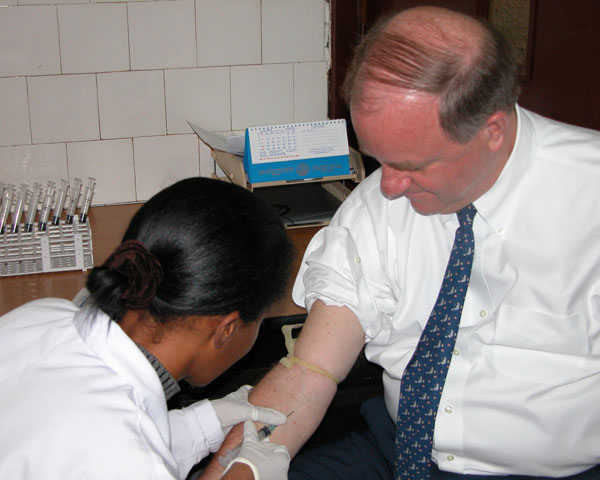This post was originally published by Mango Salute at http://mangosalute.com/salutetheday/world-aids-day-it-s-not-doom-and-gloom
The HIV/AIDS epidemic is one of the most serious health crises in the world – which is something we all know. Even if you’re not seeking out much information about international affairs, it’s hard to avoid the imagery of devastation and despair. The total numbers are of course devastating and incomprehensible. The AIDS epidemic has claimed 35,300,000 lives so far, very disproportionately centered around communities in sub-Saharan Africa. There have been 1,600,000 deaths from AIDS in the last year alone.
Beyond the numbers, there are millions of heartbreaking individual stories. AIDS patients dying a slow death from tuberculosis while wasting away in sub-standard medical conditions. Babies born with HIV. Young women infected with AIDS who don’t have much more than a picture of Pope John Paul II to comfort them, certainly no actual treatments.
A Faulty Image

Like many images in the popular consciousness, the above picture is somewhat outdated and can cause some negative effects:
- It creates indifference due to paralysis. If a problem seems completely intractable, each of us can feel that it’s not worthwhile to do anything, since it’s not likely to make a significant difference.
- It creates compassion overload. This is a real effect that relates to us humans having scope insensitivity. When different groups of people were asked to donate money to save 2,000 / 20,000 / 200,000 birds from an oil spill, the groups donated $80, $78 and $88 respectively. When we see a number representing an enormous amount of suffering, we utterly fail at adjusting our response in proportion.
- It perpetuates stereotypes. By portraying the epidemic as something that affects people in Poor Countries, the image helps to other people living in these countries in painting them as “not like us”. It also portrays the countries most affected by AIDS as being all about the epidemic.
- It’s wrong! The world has made tremendous progress.
The Success Stories
While the death toll from AIDS is still extremely high, 2012 saw about 700,000 fewer AIDS-related deaths than 2005. The worldwide number of infections has also reduced by 33%.
One of the biggest pieces of the puzzle has been the continual improvement of the effectiveness of ART (anti retroviral therapy), as well as their increasing availability. Just last month, AVAC (Global Advocacy for HIV Prevention) released some research measuring the AIDS tipping point of countries. The tipping point is when the number of people on ART has overtaken the number of new infections. This is a milestone because it means that as long as the ratio is maintained in the favour of ART, the spread of AIDS will slow and reverse. The countries that have reached tipping point include Cote d’Ivoire, Haiti, Ethiopia, Zambia, South Africa, Namibia, Malawi, Swaziland, Zimbabwe, Tanzania, Ghana, Botswana and Rwanda. These countries have a combined population over 300 million people – not something to sneeze at.
Botswana is a particular success story because of their implementation of a multi-pronged program that reversed the extremely gloomy WHO prediction that 85% of the population would eventually die from AIDS. There was no silver bullet but the program includes education and de-stigmatisation as well as an innovative opt-out testing program, meaning people are tested by default. A cornerstone of the program was that it was driven by Botswanans, with solicited help from other countries, as opposed to external governments or organizations exercising control.
AVAC estimates that in order for a country to be on its way to the AIDS tipping point, 2/3 of the population need access to ART. Currently, there are 10 million people in low and middle income countries with access, including 62% of pregnant women receiving drugs to stop the virus’s transmission to their babies. As a result, infections in children are down 50% – one of the biggest success stories so far.
The Next Step
However, this is still not enough. There are still millions upon millions of people with the condition that do not have access to ART. And while these improvements are happening in sub-Saharan Africa, AIDS infections are skyrocketing in Eastern Europe, Central Asia, the Middle East and North Africa. A particular challenge is cultural – many of these countries are culturally conservative with a significant stigma attached to HIV. This slows down the scale of the countries’ responses.
The challenges in ramping up access to ARTs as well as education and cultural awareness cannot be borne by a country alone. While donations from individuals are also extremely useful, they are not likely to be a game changer. The gargantuan efforts that are required make defeating AIDS a project little like the Large Hadron Collider, or any other mass collaboration between dozens of governments and organisations and tens of thousands of individuals. We need to celebrate the successes – and then making our elected officials prioritise the next stage of the fight
.





0 Comments